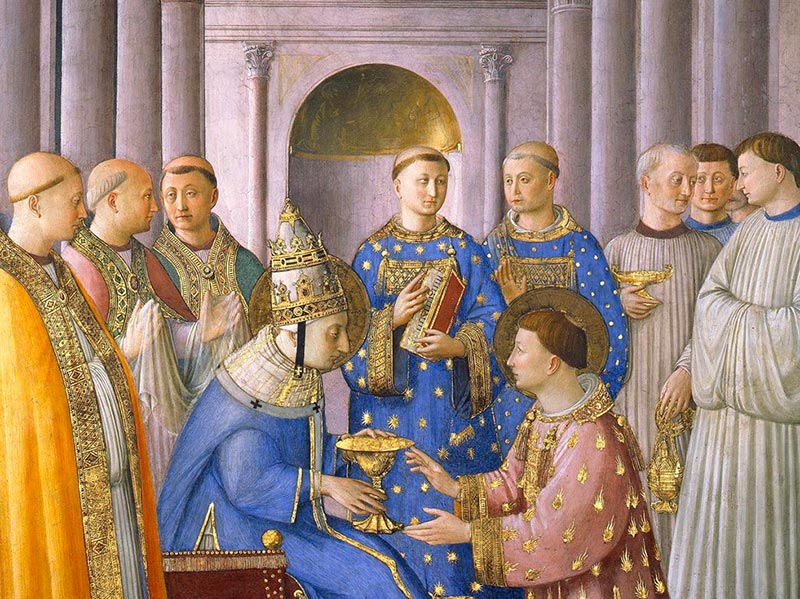18 February: Blessed John of Fiesole, known as Fra Angelico

Painting as a vehicle to make the mysteries of faith known to all
Guido di Pietro, known as John of Fiesole, or better, Fra Angelico, was a Dominican friar with a great talent for painting.
He was known as Angelico because of the great message of faith that imbued his works and the humility that distinguished them, and for the mystical value he gave to light.
Guido was born in Vicchio di Mugello, near Florence between 1395 and 1400.
Not much is known about his family roots, except that his father’s name was Pietro and that his younger brother, Benedict, had chosen to consecrate his life to God.
Guido joined the Order of Preachers and made his vows some time around 1418, in the Dominican Convent in Fiesole, taking on the name John.
He served as Vicar in Fiesole until 1440, when Cosimo de’ Medici, known as Cosimo the Elder, commissioned him to decorate the Convent of San Marco in Florence, including the cells of the friars.
He began his training in art near Mugello and later perfected it in Florence, under the guidance of Lorenzo Monaco and Gherardo Starnina, from whom he learned, respectively, how to use bright and unnatural colours, and how to paint a powerful light that left no room for shadows, to convey holiness in his paintings.
Fra Angelico saw painting as a way to illustrate Gospel accounts in order to make the mysteries of faith accessible to all, and to portray events from the lives of Jesus, Mary and the Saints. He used light to convey the message of salvation and express divine beauty. His artistic career was entirely dedicated to depicting scenes from the Gospel with such realism, that the figures seem alive.
In the second half of 1445, Fra Angelico was called to Rome by Eugene IV. He lived at the Convent of Santa Maria Sopra Minerva, between 1446 and 1449.
While working at the service of the Popes, Fra Angelico painted frescoes on the “Stories of Christ”, in the Chapel of the Holy Sacrament, known as “parva”, in 1446, which were destroyed during the time Pontificate of Paul III. After the death of Eugene IV on 23 February 1447, his successor, Nicholas V, commissioned him to paint frescoes in the Apostolic Palace’s Chapel that bears his name: the Niccoline Chapel. With the approval of the Pope, he travelled to Orvieto on 11 May 1447, to work on the ceiling of the Chapel of San Brizio in the city’s Cathedral. He then returned to Rome to finish painting the Niccoline Chapel, which he completed in 1448. Two years later, he went back to Florence and was appointed Prior of the Dominican Convent in Fiesole, a position held for two years, before returning to Rome again in 1452 to complete some paintings in Santa Maria Sopra Minerva. He died and was buried at the Convent in February 1455.
With the Motu Proprio, Qui res Christi gerit, on 3 October 1982, Saint John Paul II granted the approval for the observance of the liturgical cult of Fra Angelico. On 18 February 1984, he proclaimed Fra Angelico Universal Patron Saint of Artists.





